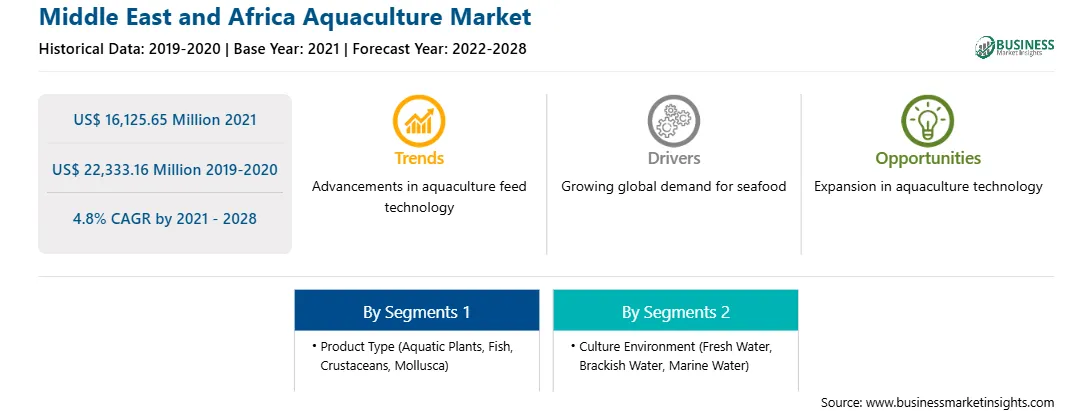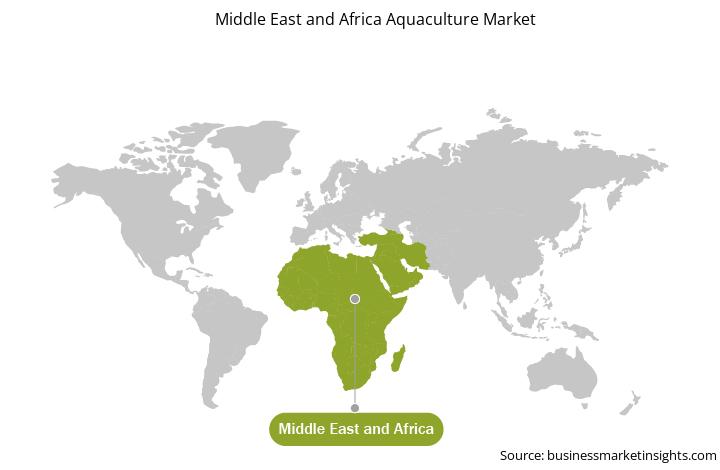Aquaculture is an efficient method of fish production, which is ecologically effective and involves lower costs, as these ventures can be operated at a large as well as a small scale. Currently, the aquaculture business is hampered by concerns regarding its contribution to water pollution, adverse impact on the environment, and threat to coastal ecosystems. However, advancements in technologies facilitating effective disease management and environmental management, and genetic improvements in cultured species are expected to bring significant changes in the field of aquaculture in the coming years.
The high growth in demand for fish oil, which is largely used as a dietary supplement in the healthcare, pharmaceuticals, and food industries, is highlighting the need for scaling up fish production. Fish oil is an efficient source of vitamin A and D and is considered the most significant source of vitamins for human consumption, after wild fish. Currently, fish oil accounts for a small percentage of total edible oil production. However, the percentage is expected to rise in the coming years owing to the health benefits of fish oil. Due to its omega-3 fatty acids content, fish oil is widely used in dietary supplements. It also reduces the level of triglyceride in the body, and minimizes the chances of heart disease and stroke. In the cosmetics industry, fish oil helps overcome skin disorders such as dermatitis, skin cancer, and allergy. In medical applications, it helps maintain heart health, prevent mental disorders, shred weight, enhance eye health, support healthy skin, and manage depression-related symptoms. Fish oil is considered as the fastest-growing protein source segment in the MEA food supply chain. It is also widely replacing genetically modified (GM) plant oil.
South Africa has recorded the highest number of COVID-19 cases in the MEA, followed by Saudi Arabia and the UAE. Due to the lockdown in countries in this region, the distribution network was significantly disrupted in 2020, affecting the sales of companies operating in the aquaculture market. However, the circumstances improved to some extent in 2021. The marketplace is experiencing positive recovery signs, and the sales of seafood products have surged. Moreover, the UAE is the center of tourist attractions and has a well-established hospitality industry. With the easing of the lockdown restrictions and travel bans, the demand for seafood from the hospitality sector is projected to grow significantly in the coming years, thereby driving the aquaculture market growth.
With the new features and technologies, vendors can attract new customers and expand their footprints in emerging markets. This factor is likely to drive the MEA aquaculture market at a good CAGR during the forecast period.
MEA Aquaculture Market Segmentation
Strategic insights for the Middle East and Africa Aquaculture provides data-driven analysis of the industry landscape, including current trends, key players, and regional nuances. These insights offer actionable recommendations, enabling readers to differentiate themselves from competitors by identifying untapped segments or developing unique value propositions. Leveraging data analytics, these insights help industry players anticipate the market shifts, whether investors, manufacturers, or other stakeholders. A future-oriented perspective is essential, helping stakeholders anticipate market shifts and position themselves for long-term success in this dynamic region. Ultimately, effective strategic insights empower readers to make informed decisions that drive profitability and achieve their business objectives within the market.

| Report Attribute | Details |
|---|---|
| Market size in 2021 | US$ 16,125.65 Million |
| Market Size by 2028 | US$ 22,333.16 Million |
| Global CAGR (2021 - 2028) | 4.8% |
| Historical Data | 2019-2020 |
| Forecast period | 2022-2028 |
| Segments Covered |
By Product Type
|
| Regions and Countries Covered | Middle East and Africa
|
| Market leaders and key company profiles |
The geographic scope of the Middle East and Africa Aquaculture refers to the specific areas in which a business operates and competes. Understanding local distinctions, such as diverse consumer preferences (e.g., demand for specific plug types or battery backup durations), varying economic conditions, and regulatory environments, is crucial for tailoring strategies to specific markets. Businesses can expand their reach by identifying underserved areas or adapting their offerings to meet local demands. A clear market focus allows for more effective resource allocation, targeted marketing campaigns, and better positioning against local competitors, ultimately driving growth in those targeted areas.

The Middle East and Africa Aquaculture Market is valued at US$ 16,125.65 Million in 2021, it is projected to reach US$ 22,333.16 Million by 2028.
As per our report Middle East and Africa Aquaculture Market, the market size is valued at US$ 16,125.65 Million in 2021, projecting it to reach US$ 22,333.16 Million by 2028. This translates to a CAGR of approximately 4.8% during the forecast period.
The Middle East and Africa Aquaculture Market report typically cover these key segments-
The historic period, base year, and forecast period can vary slightly depending on the specific market research report. However, for the Middle East and Africa Aquaculture Market report:
The Middle East and Africa Aquaculture Market is populated by several key players, each contributing to its growth and innovation. Some of the major players include:
The Middle East and Africa Aquaculture Market report is valuable for diverse stakeholders, including:
Essentially, anyone involved in or considering involvement in the Middle East and Africa Aquaculture Market value chain can benefit from the information contained in a comprehensive market report.